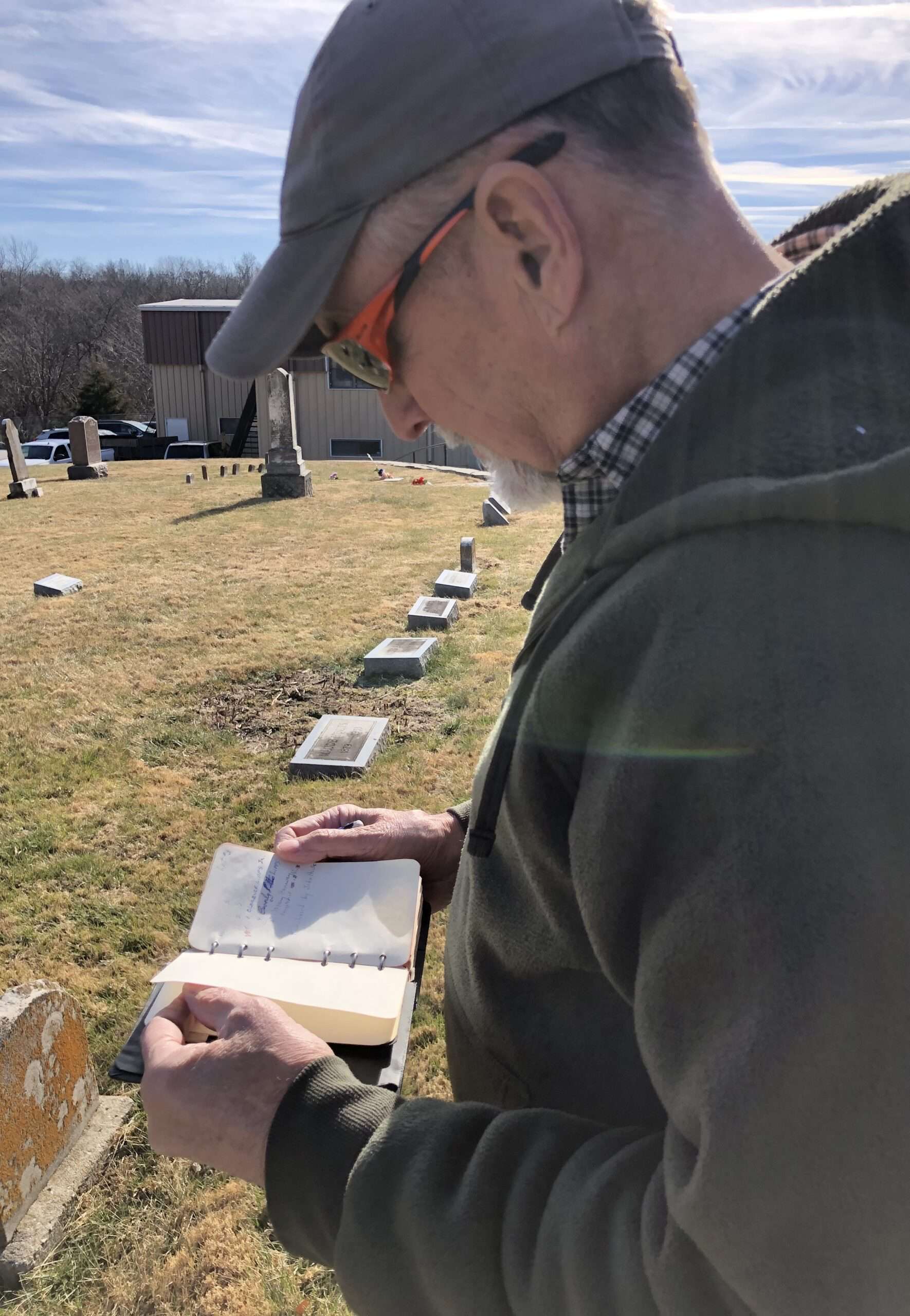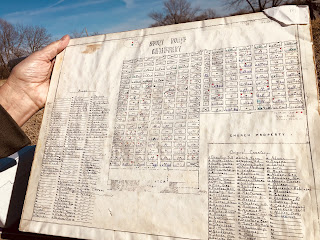Making peace with a cemetery.
When I am researching for my clients, I often need to go to cemeteries as the last piece of the puzzle in finding their ancestors. This can be the most difficult part of the process. Of course, I start with Findagrave.com or Billiongraves.com. But many graves are still not documented online. I am thankful when the cemetery has an onsite caretaker’s office or church attached to it. Otherwise, I need to track down who is in charge of the records. It could be the county or state, but it could also be a committee of citizens. I am currently trying to find the grave of a woman for a client, in which the old historic cemetery now lies on the private land of a farmer. So, I will need to receive his permission to search the crumbling headstones on his property – most of which are overrun by entangling weeds and bushes.
So, in order to become more comfortable with cemeteries, I enlisted the help of a local friend, Steve Grinter, who sits on the Cemetery Association of the
Stony Point Cemetery in Kansas City, Kansas. Many of his relatives are buried there. In this first picture, Steve is holding the old ledger book handed down to him from previous overseers. It is an index of all the graves, including those without headstones. He showed me the process of how someone would locate their ancestor here.
After checking the little ledger book, he then looks at the plot map. With this he can find where in the cemetery the grave is located. This is huge, as I have walked around for hours in cemeteries that did not have a plot map available.
Finally, Steve has 2 index boxes which include information on each individual: birthdate, death date, and oftentimes obituaries stapled to the back. If you find any of these types of gems when researching your family, please share them with the world on Ancestry.com and/or FamilySearch.org.
These three items (the ledger, index boxes, and plot map) have duplicates that are kept with the Chairman of the Cemetery Association. These types of people are crucial to family researchers and we owe them a huge debt of gratitude for their work invested in protecting our personal history.
Finding graves can be excruciatingly difficult, for many reasons. Once, I was in an historic cemetery trying to find a headstone. It was shortly after a significant rain. As I walked down one aisle, I stepped onto a 100-year old grave, and it suddenly gave way — and I began falling into it. Like quicksand, the ground collapsed around me, burying me up to the waist. With all my might, I pushed up myself up and out with super-human adrenaline strength. I stood shaking intensely. It felt like I was in a horror movie. Suddenly the caretaker appeared out of nowhere and said, “you screamed really loud”. I told him I didn’t realize I was screaming…. but it made sense. He went on to tell me he has fallen into several graves, including once landing on the skeleton, as the coffin had disintegrated. I beseeched him to stop talking as I knew I was already going to have nightmares. He smiled and offered to show me the famous people in their historic cemetery, which cheered me instantly. But lesson learned: be careful of walking on old graves during rainy season, and especially when the ground feels spongy.
So, as you can see – I have challenges with cemeteries. But I am coming to make peace with them, especially when I have the glad help of those who are their knowledgable overseers.
My final story is about another method of finding a grave. I went to the caretaker’s office of one of the oldest cemeteries in town. He showed me the ledger of where the person’s grave was and walked me out to the site.
He stopped and said, “Oh I am sorry Cami. She isn’t here”.
I replied, “She has to be here, John – the ledger says she is”.
To which he responded, “But Cami, you can see she is not here”.
I surveyed the graves around the area, and noticed the empty spaces. I dropped to my knees and started digging with my hands. In shock, John said…..”what are you doing??”
I told him I surmised her headstone must have sunk over the past 100 years and been covered over by soil. Suddenly my fingers touched it! I froze and looked up at John with with pure exhilaration. This wonderful 70 year old gentleman dropped to his knees, began digging beside me, and together we unearthed the headstone. He sat back and said- – in the 50 years he had been a part of the cemetery association, he had never seen anything like that. I hope they later enlisted volunteers to uncover other headstones. But I learned to always bring soft gloves with me (never a spade – as it could damage the soft stone).
If you have other cemetery tips, please pass them along! I want to become comfortable in knowing how to research in these amazing places where our ancestors reside.





